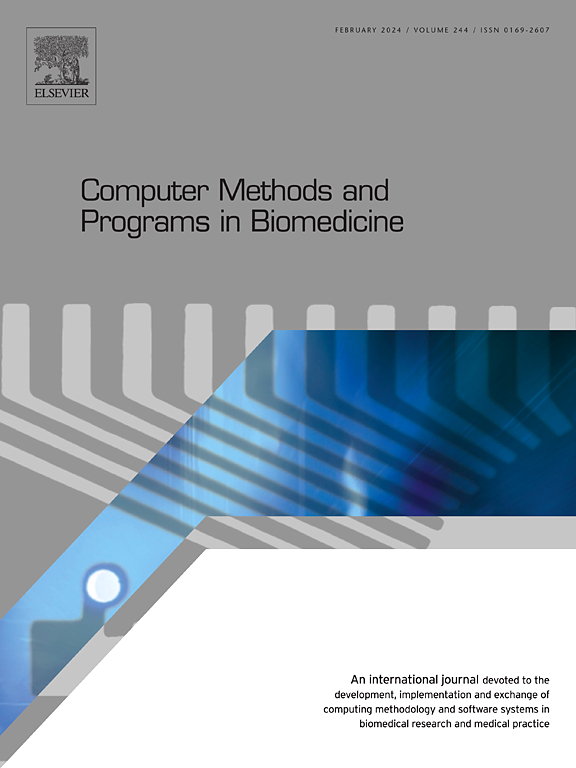Fluid-structure interaction simulations in patient-specific coronary arteries with aneurysms: Viscoelastic or shear-thinning property of blood
IF 4.9
2区 医学
Q1 COMPUTER SCIENCE, INTERDISCIPLINARY APPLICATIONS
引用次数: 0
Abstract
Background and Objective
Coronary artery aneurysm is a progressive and often asymptomatic condition with a prevalence ranging from 0.3 % to 5 %. This condition can lead to severe and potentially fatal complications. Given the challenges of conducting experiments on real patients, numerical simulations have emerged as a valuable alternative. This study aims to enhance the accuracy of hemodynamic analysis and fluid-structure interaction assessments by incorporating the viscoelastic properties of blood, which are often overlooked, in simulations of the right coronary artery with various aneurysm morphologies.
Methods
This research employs numerical simulations to analyse the hemodynamics and assess the one-way coupled fluid-structure interaction within the right coronary artery. The study utilised the simplified Phan-Thien/Tanner model to represent the viscoelastic properties of blood. Different aneurysm morphologies were simulated, and the results were compared with those obtained using the widely recognised Carreau model. The analysis focused on the time-average wall-shear stress, as well as the stress and deformation experienced by the aneurysm wall.
Results
The hemodynamic analysis demonstrated that the simplified Phan-Thien/Tanner model produced similar flow patterns to the Carreau model but resulted in a significant reduction of approximately 50 % in the time-average wall-shear stress. This reduction aligns with previous findings. Additionally, the study revealed substantial differences in the stress and deformation of the aneurysm wall, with the simplified Phan-Thien/Tanner model proving more accuracy. The largest deformations were observed in aneurysms with incipient and fusiform shapes, particularly in the divergent section of the proximal region. In the case of saccular aneurysms, the most compromised area was identified not within the aneurysm sac itself, but in the region of the artery just upstream.
Conclusions
Incorporating the viscoelastic properties of blood into fluid-structure interaction simulations significantly improves the accuracy of hemodynamic and structural assessments of coronary artery aneurysms. This study underscores the importance of considering these properties when evaluating aneurysm behaviour, which could have important implications for understanding the progression and potential rupture of aneurysms, thereby guiding more effective clinical interventions.

求助全文
约1分钟内获得全文
求助全文
来源期刊

Computer methods and programs in biomedicine
工程技术-工程:生物医学
CiteScore
12.30
自引率
6.60%
发文量
601
审稿时长
135 days
期刊介绍:
To encourage the development of formal computing methods, and their application in biomedical research and medical practice, by illustration of fundamental principles in biomedical informatics research; to stimulate basic research into application software design; to report the state of research of biomedical information processing projects; to report new computer methodologies applied in biomedical areas; the eventual distribution of demonstrable software to avoid duplication of effort; to provide a forum for discussion and improvement of existing software; to optimize contact between national organizations and regional user groups by promoting an international exchange of information on formal methods, standards and software in biomedicine.
Computer Methods and Programs in Biomedicine covers computing methodology and software systems derived from computing science for implementation in all aspects of biomedical research and medical practice. It is designed to serve: biochemists; biologists; geneticists; immunologists; neuroscientists; pharmacologists; toxicologists; clinicians; epidemiologists; psychiatrists; psychologists; cardiologists; chemists; (radio)physicists; computer scientists; programmers and systems analysts; biomedical, clinical, electrical and other engineers; teachers of medical informatics and users of educational software.
 求助内容:
求助内容: 应助结果提醒方式:
应助结果提醒方式:


